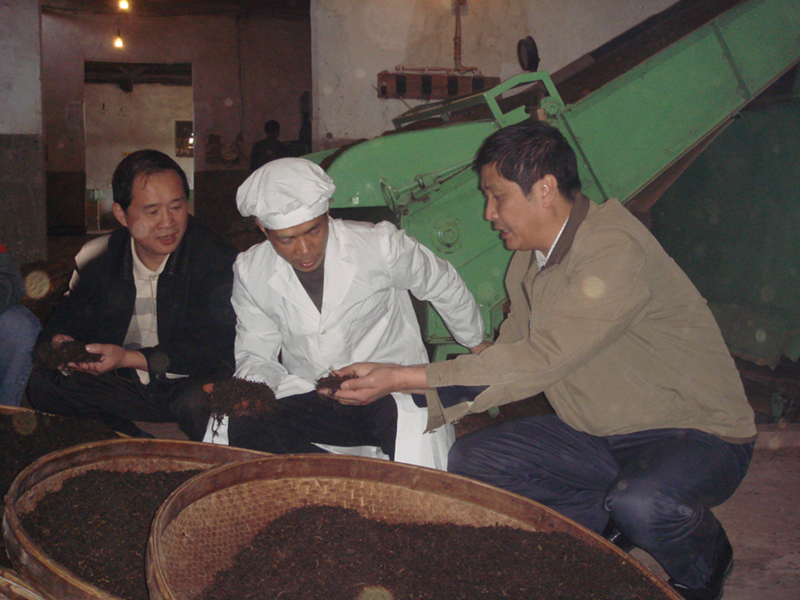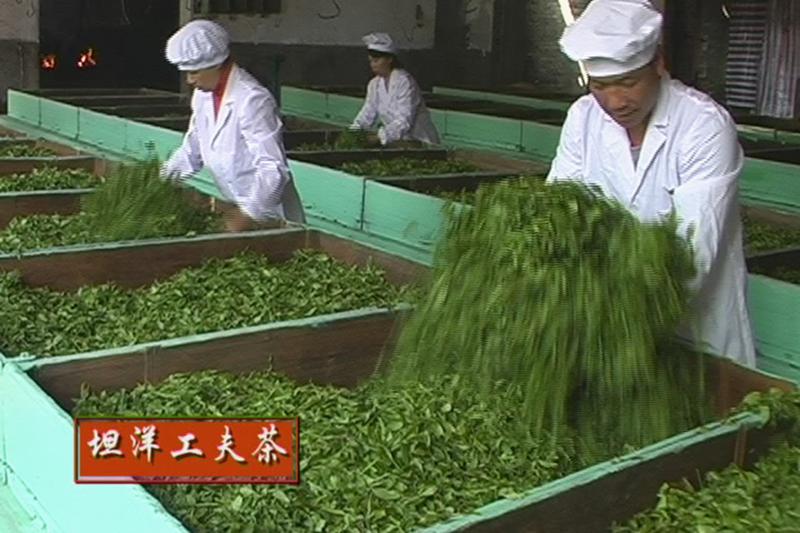
The fermentation process of Tanyang tea. [Photo/fujian-szwhg.chaoxing.com]
Tangyang tea is a fully fermented tea that originated in Tangyang village in Fu'an city and has been included in the extended projects of the traditional craftsmanship category in the fifth batch of the national list of representative items of intangible cultural heritage.
From the sixth year of the Guangxu period of Qing Dynasty (1644-1911) to the 25th year of the Republic of China (1915-1936 AD), annual exports of Tangyang tea reached tens of thousands of dan (500 metric tons). It was sold to more than 20 countries and regions, such as the Netherlands, the United Kingdom, France, Japan, and Southeast Asia, and was particularly favored by the royal families and nobles of countries like the Netherlands and the UK.
The process of making Tangyang tea includes four steps: withering, rolling, fermentation, and drying, which moderately oxidize the polyphenolic compounds in fresh tea leaves. Then, through processes such as screening, cutting, windowing, picking, refiring, and blending, the leaves are divided into various grades of commercial tea.
The tea soup is bright red and gold in color, with a strong osmanthus fragrance. Tangyang tea is also known as "Oolong" or "Black Tea" by local tea farmers. It has health benefits such as beautifying the skin, reducing blood pressure and blood sugar, warming the stomach, and promoting digestion.

The withering process of Tanyang tea. [Photo/fujian-szwhg.chaoxing.com]

Copyright © General Office of Fujian Provincial People's Government
Website Identification Code 3500000049Registration Number: 15003084
All rights reserved. The content (including but not limited to text, photo, multimedia information, etc) published in this site belongs to fujian.gov.cn.
Without written authorization from fujian.gov.cn, such content shall not be republished or used in any form.